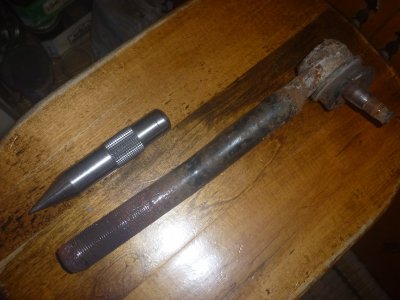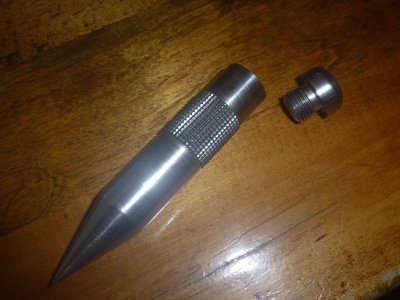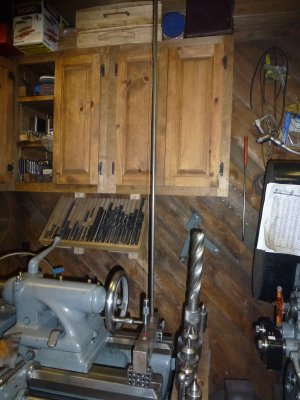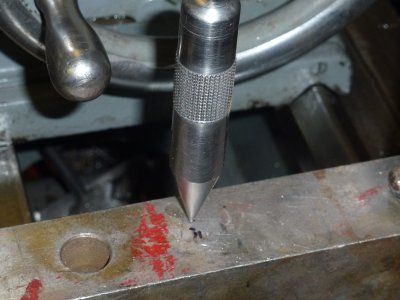- Joined
- Feb 7, 2013
- Messages
- 2,534
This morning for a bit of shop fun I decided to make a plumb bob. I had some left over
tie rod ends that needed to be something else so made the ferrobob out of part
of a tie rod. I used the compound and machined on the back side of the part
using the lathe in reverse, something I hadn't done for a while. It worked just fine.

I made the ferrobob out of the threaded end of the tie rod end as it was the only straight part. It machined pretty well so apparently
the tie rod ends are not too far from mild steel.

I have been thinking of using a plumb bob as an aid to lathe leveling. Now all I need is a stand to hold up the plumb bob and a piece of fishing line.
tie rod ends that needed to be something else so made the ferrobob out of part
of a tie rod. I used the compound and machined on the back side of the part
using the lathe in reverse, something I hadn't done for a while. It worked just fine.

I made the ferrobob out of the threaded end of the tie rod end as it was the only straight part. It machined pretty well so apparently
the tie rod ends are not too far from mild steel.

I have been thinking of using a plumb bob as an aid to lathe leveling. Now all I need is a stand to hold up the plumb bob and a piece of fishing line.



